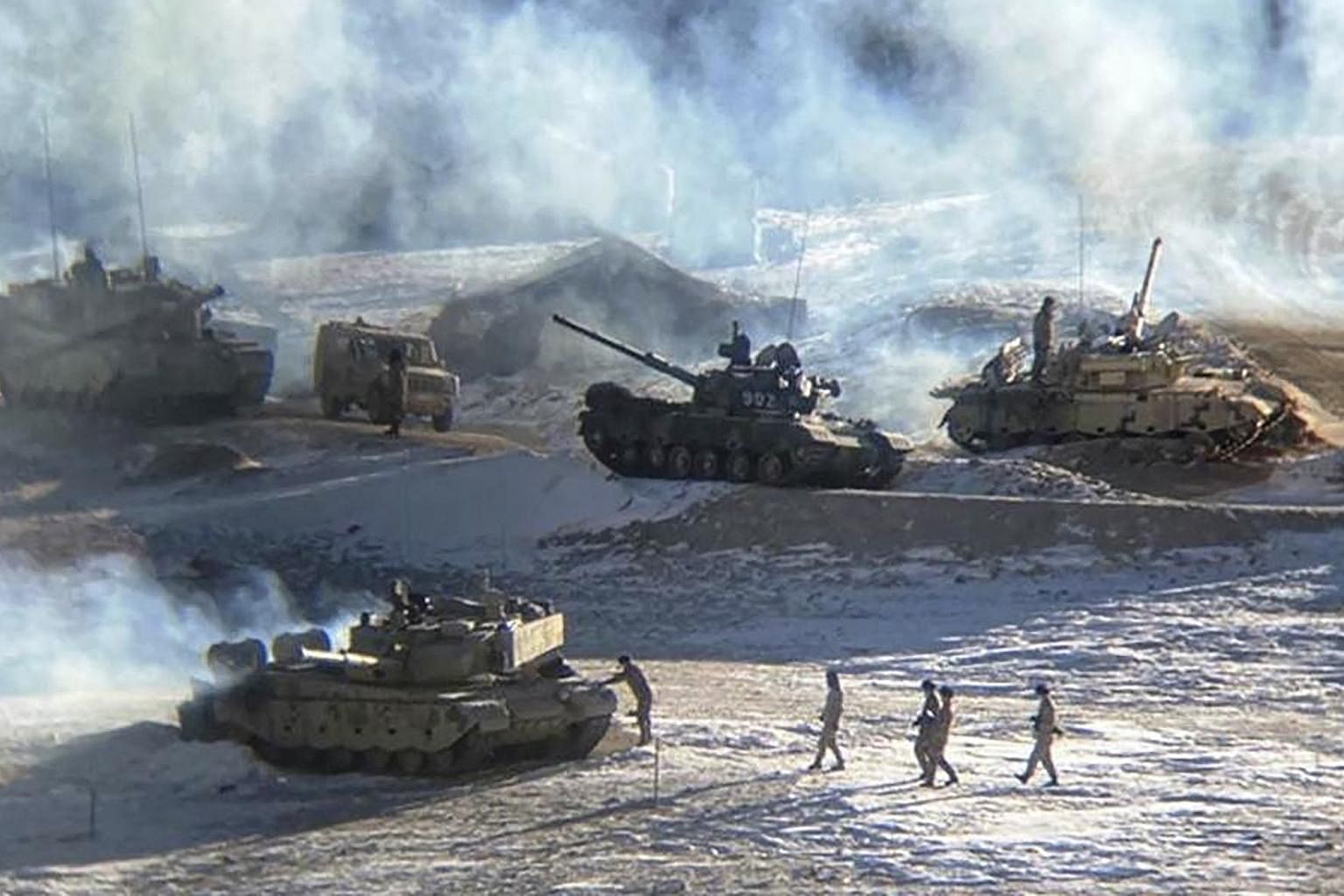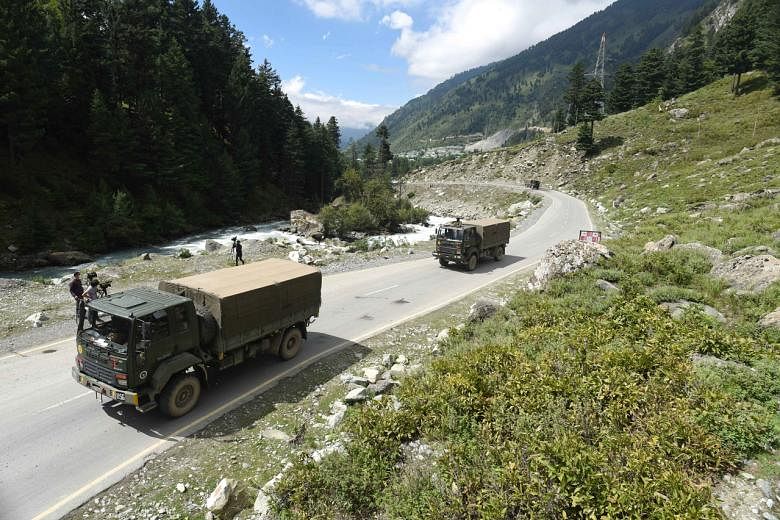NEW DELHI - India and China are resuming talks on Wednesday (Jan 12) after a break of three months over their disputed border as the building of infrastructure by both sides in the Ladakh region continues apace.
New Delhi has said it is closely monitoring the construction of a bridge by China on Pangong Tso Lake, a cross-border Himalayan lake, where hostilities flared up between the two sides in 2020.
Both sides successfully negotiated disengagement at the lake last year, but the bridge construction on the Chinese side is just one instance of continuing fortifications along the so-called Line of Actual Control (LAC), the undemarcated de facto border.
The bridge is expected to help China to quickly move troops to the lake.
Said Professor Alka Acharya, who specialises in Chinese studies at Jawaharlal Nehru University: "There is pretty much a kind of border impasse, which doesn't look like it's going to be sorted out in a hurry.
"In the meantime, the Chinese are strengthening their position. They are going to reduce their time to reach the LAC (at Pangong Tso) from about 12 hours to under four to five hours from Tibet.
"This is going to be a game-changer. The bridge would obviously bring some pressure on India."
Last week, India's foreign ministry said the bridge was in an area under Chinese "illegal occupation" for 60 years. But the foreign ministry in Beijing retorted that boosting infrastructure in the area was "aimed at safeguarding China's territorial sovereignty and security as well as peace and stability on the China-India border".
Professor Harsh V. Pant, director for studies and head of the Strategic Studies Programme at the Observer Research Foundation, said the bridge construction was a reminder to India that the border issue remained an intractable problem.
"In terms of the long-term perspective of the Sino-Indian border issue, this is once again a reminder that the border challenge that India faces from China is not a short-term one. This is going to be a longstanding problem," said Prof Pant.
The India-China border row erupted in June 2020 following a violent clash involving their troops in the Galwan Valley in Ladakh in what until then had been a largely peaceful region.
The incident sparked confrontations in other parts of the ill-defined area amid a build-up of troops and weaponry across the LAC. The two countries have since held 13 rounds of talks which has led to disengagement in the Galwan Valley, Pangong Tso and in the Gogra Heights.
India, on its part, has also been speeding up infrastructure work along the border to enable quick troop movement. Government expenditure on improving infrastructure has increased, with funds for the upkeep and construction of border roads increased from 55.86 billion rupees (S$1.02 billion) to 60 billion rupees in the last budget.
Last month, Defence Minister Rajnath Singh attended a ceremony to inaugurate 27 roads and bridge projects. Separately, landing strips have also been upgraded as part of the infrastructure development.

Construction on the Zojila Tunnel in Kashmir has been speeded up to drastically reduce travel time through the Zojila Pass to 15 minutes. The journey currently takes nearly four hours.
India had for years adopted a policy of keeping the border areas inaccessible and underdeveloped to prevent incursions by the Chinese. But that policy was revised following the 2020 clashes.
China, however, is seen to have the early mover advantage.
"China has a long-term advantage in that the infrastructure that it has been developing along the border has been going on for several decades. India is new to the game... there is disparity which continues due to the time lag. It could be some time before India reaches where China is," said Prof Pant.
"But what has happened is that India has finally woken up to the challenge that it can no longer be sluggish on infrastructure development along the border. It will have to be done on a war footing.
"India has learnt that it has to be perennially on guard when it comes to the LAC, something it was not doing prior to 2020," he added.


